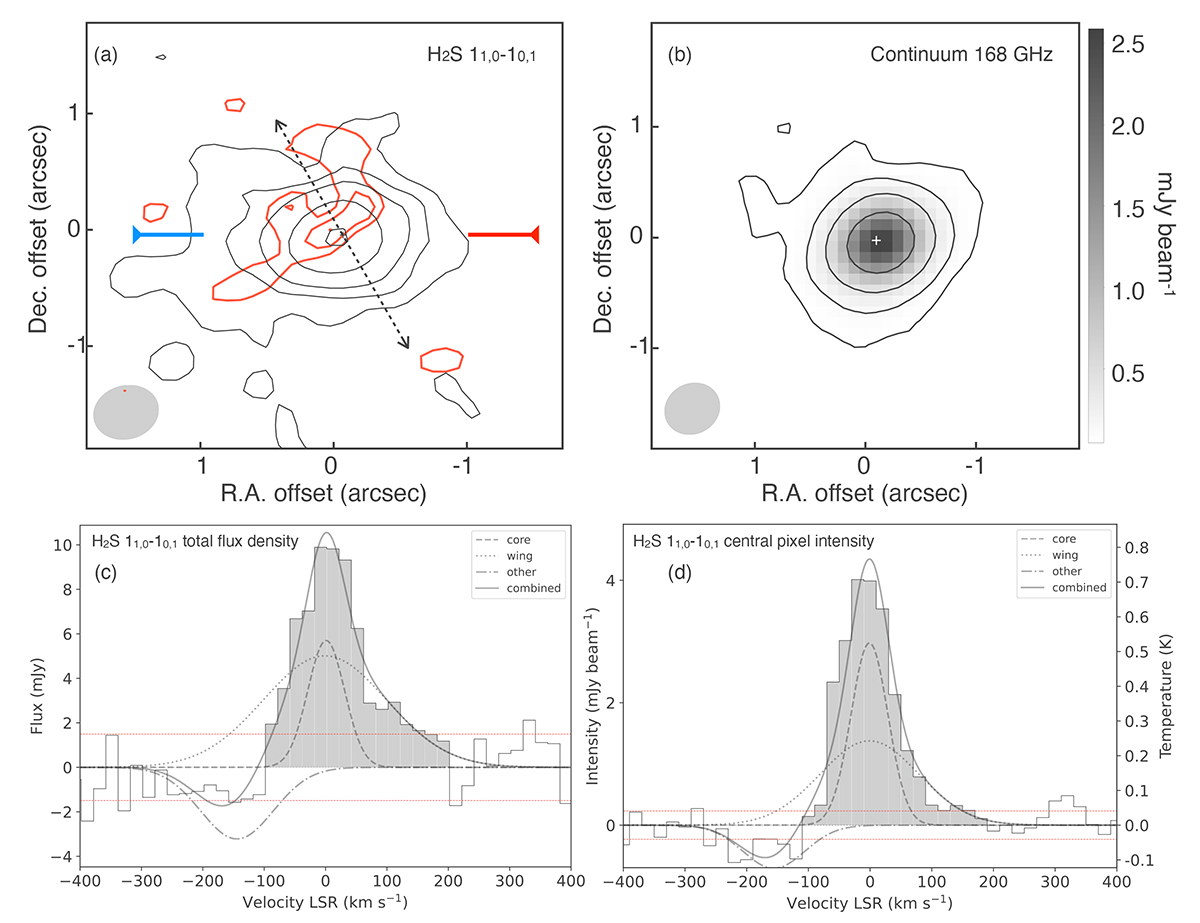Fig. 7.

Download original image
Results of 168 GHz observations towards NGC 1266. (a) The velocity-integrated line-emission maps of H2S 11, 0 − 10, 1. Black contours: −70 km s−1 to 70 km s−1 (3, 6, 9, and 18σ, where σcore = 1.08 × 10−2 Jy beam−1 km s−1); blue: −100 km s−1 to −70 km s−1; red: 70 km s−1 to 200 km s−1 (3, 4, and 5σ, where σred = 7.5 × 10−3 Jy beam−1 km s−1 and σblue = 5.7 × 10−3 Jy beam−1 km s−1, respectively). The beam size is shown in the bottom left by a grey-filled circle. The blue and red line segments indicate the PA of the disc (∼90°) and direction of the molecular outflows detected in CO 2−1 (PA ∼ 30°) (Alatalo et al. 2011). (b) The continuum emission at 168 GHz is shown in greyscale and as contours (3, 9, 27, and 81σ, where σcont = 1.3 × 10−5 Jy beam−1). (c) Spectrum in the unit of the flux density within the emitting region (over 3σ in moment-0 image) against the line-velocity offset at the systemic velocity. The black histogram shows the observation result. The red-dotted line indicates the 1σ rms level. The black dashed line shows a narrow line component, the dotted line shows a broad line component, the dash-dotted line shows an absorption component, and the solid line represents the three components combined. (d) Spectrum in units of the mean brightness at the peak intensity pixel against the line velocity.
Current usage metrics show cumulative count of Article Views (full-text article views including HTML views, PDF and ePub downloads, according to the available data) and Abstracts Views on Vision4Press platform.
Data correspond to usage on the plateform after 2015. The current usage metrics is available 48-96 hours after online publication and is updated daily on week days.
Initial download of the metrics may take a while.


